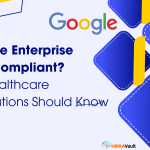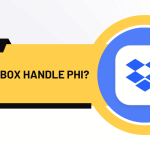
With hacking and IT incidents accounting for 75% of all healthcare data breaches in 2023, understanding and implementing the HIPAA Breach Notification Rule is essential for all covered entities. This guide will walk you through the steps to take when facing a potential data breach and how to maintain HIPAA compliance.
Understanding the HIPAA Breach Notification Rule
The HIPAA Breach Notification Rule (45 CFR §§ 164.400-414) mandates that covered entities and their business associates notify affected individuals, the U.S. Department of Health and Human Services (HHS), and, in some cases, the media when a breach of unsecured Protected Health Information (PHI) occurs.
What Constitutes a Data Breach?
A breach is generally defined as an impermissible use or disclosure of PHI that compromises its security or privacy. This could range from a stolen laptop containing unencrypted patient data to an employee accidentally sending an unencrypted email with sensitive information.
The Role of the Privacy Officer in Breach Response
Your Privacy Officer plays a crucial role in managing potential HIPAA violations. They are responsible for investigating incidents, assessing risks, and coordinating the organization’s response to ensure HIPAA compliance.
Steps for Covered Entities in Handling a Data Breach
1. Immediate Notification to Privacy Officer
If you suspect a HIPAA violation has occurred, your first action should be to notify your Privacy Officer immediately. This prompt response is critical for initiating an effective data breach response.
2. Conducting a Thorough Risk Assessment
The Privacy Officer must perform a comprehensive risk assessment to determine the extent of the breach and its potential impact on affected individuals.
The Four-Factor Test
To assess whether a breach requires notification, consider these factors:
- The nature and extent of the PHI involved
- The unauthorized person who used the PHI or to whom it was disclosed
- Whether the PHI was actually acquired or viewed
- The extent to which the risk to the PHI has been mitigated
Exceptions to Reporting
There are three main exceptions where breach notification may not be required:
- Unintentional acquisition, access, or use of PHI by a workforce member acting in good faith
- Inadvertent disclosure of PHI between authorized persons
- A good faith belief that the unauthorized person would not be able to retain the information
3. Reporting to the Office for Civil Rights (OCR)
If the risk assessment determines that a breach has occurred, the covered entity must report it to the OCR.
Timelines for Reporting
- For breaches affecting 500 or more individuals: Report within 60 days of discovery
- For breaches affecting fewer than 500 individuals: Report annually, no later than 60 days after the end of the calendar year
Information to Include in the Report
The report should detail the circumstances of the breach, including:
- How it happened
- Which patient records were affected
- What corrective actions have been taken
Notifying Affected Parties
Large-Scale Breaches (500+ Individuals)
For breaches affecting 500 or more individuals:
- Notify affected individuals via first-class mail or email (if agreed upon)
- Inform prominent media outlets in the state or jurisdiction where the breach occurred
- Report to HHS through their breach notification portal
Smaller Breaches (<500 Individuals)
For breaches affecting fewer than 500 individuals:
- Maintain a log of all breaches
- Notify HHS within 60 days after the end of the calendar year
Preventing Future Breaches
The Importance of Data Encryption
Implementing robust data encryption is crucial in preventing unauthorized access to PHI. Encrypted PHI that is breached may not require notification if the encryption keys remain secure.
Implementing Robust Healthcare Data Security Measures
To enhance your HIPAA compliance and minimize the risk of data breaches:
- Regularly train staff on HIPAA regulations and best practices
- Implement strong access controls and authentication measures
- Use secure, encrypted communication channels for all PHI transmissions
- Conduct regular security audits and vulnerability assessments
- Develop and maintain an incident response plan
Conclusion
Understanding and adhering to the HIPAA Breach Notification Rule is crucial for all covered entities. With the U.S. Department of Health and Human Services (HHS) Office for Civil Rights (OCR) imposing $5,698,000 in HIPAA penalties in 2023 alone, the financial and reputational risks of non-compliance are significant.
By following the steps outlined in this guide and implementing strong healthcare data security measures, you can better protect your patients’ PHI and maintain HIPAA compliance. Remember, prevention is always better than cure when it comes to data breaches.
At HIPAA Vault, we’re committed to helping you navigate the complex world of HIPAA compliance. Our fully-managed security solutions for hosting, email, file-sharing, and faxing can significantly enhance your data protection efforts. For any questions about HIPAA data security or our services, don’t hesitate to contact us at 760-290-3460.





